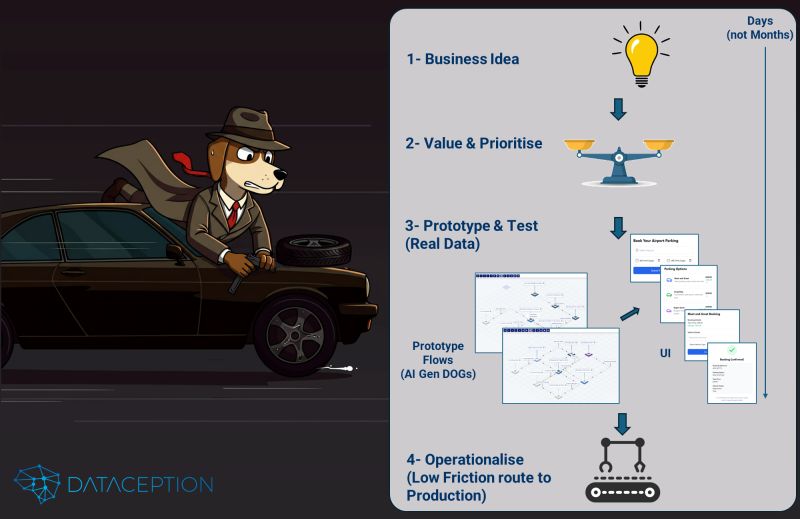AI implementation challenges are surfacing everywhere—companies sinking millions and spending years trying to get AI to work, only to struggle with adoption.
After years of deploying AI across industries, we’ve learned a fundamental truth:🚨 AI projects will “fail”—and that’s part of the process.
Success isn’t about avoiding failure—it’s about getting good at continuously testing, iterating, and adapting without slowing down the business.
Three Key Lessons from Real-World AI Deployment
1️⃣ AI is not just GenAI
GenAI is getting all the hype, but Data Science has always been about choosing the right tool for the problem. Sometimes an LLM isn’t the answer—or it’s only one piece of the puzzle.
2️⃣ AI innovation must be rapid and low-risk
The organizations that win with AI aren’t those that avoid failure, but those that can experiment fast, at low cost, and with minimal disruption.
3️⃣ It’s a business transformation, not just a technology shift
Most AI projects stall because organizations treat them as tech experiments, rather than business change initiatives. If the business doesn’t adopt AI outputs, it doesn’t matter how advanced your models are.
Building an AI Adoption Engine: Rapid Iteration & Business Buy-In
To integrate AI successfully, organizations need to continuously place value-driven bets—prioritizing real business problems and iterating quickly.
✅ Step 1: Ideation with a Value Framework
- Use a structured value framework to create a pipeline of business-changing ideas.
- Prioritize AI initiatives based on measurable business outcomes, not tech-first enthusiasm.
✅ Step 2: Fast, Low-Risk Testing with Real Data
- Move from idea to prototype in days or weeks (not months or years).
- Test AI solutions using real data and real business scenarios to prove feasibility early.
- Our Data Object Graph (DOG)-driven AI Digital Twin tool accelerates this process, allowing AI models, UX, and process flows to be created and refined instantly.
✅ Step 3: Enable the Organization for AI-Driven Change
- Business leaders must be incentivized to drive AI adoption—not resist it.
- AI shouldn’t be a science project sitting in R&D; it should be embedded into business operations.
- Reduce friction by making AI easy to adopt, interpret, and integrate into daily decision-making.
TL;DR: Learn to Change the Wheels While the Car is Moving 🚗💨
The key to AI success? Mastering continuous experimentation and seamless adoption.
AI isn’t about getting everything right the first time. It’s about:
✔ Testing out new ideas quickly and cheaply
✔ Swapping in better AI models or processes without stopping business operations
✔ Gearing up the organization for fast, scalable change
This is how AI transforms industries—not through massive, years-long projects, but through rapid, incremental wins that compound over time.

With Dataception's DOGs (Data Object Graphs), AI is just a walk in the park! 🐶🚀

